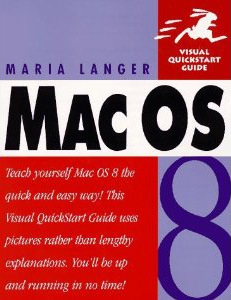Answer: It depends.
![]() I’ve been working a lot with iBooks Author lately. Not only did I write and publish a 242-page book about it within 2 weeks of the software’s release, but I’m now deep in the process of converting that book into an iBooks Author file. The result will be a special iBooks 2 interactive edition that includes all the bells and whistles I can cram into it: images, interactive images, galleries, videos, tables, sounds, links — you name it. If I could figure out a way to use the 3D image widget to show something meaningful in the book, I would.
I’ve been working a lot with iBooks Author lately. Not only did I write and publish a 242-page book about it within 2 weeks of the software’s release, but I’m now deep in the process of converting that book into an iBooks Author file. The result will be a special iBooks 2 interactive edition that includes all the bells and whistles I can cram into it: images, interactive images, galleries, videos, tables, sounds, links — you name it. If I could figure out a way to use the 3D image widget to show something meaningful in the book, I would.
The Limitations of iBooks Author-Generated EBooks
Lots of folks wondered why I didn’t just create the original edition of my iBooks Author book with iBooks Author. Indeed, one reviewer on Apple’s iBookstore had the nerve to [unfairly] bash the book because it wasn’t created in that format. (As if I should write my Excel books with Excel or my Mac OS books with TextEdit. But I digress.)
Some people might think the reason is Apple’s “evil” EULA, which prohibits sale of an iBooks Author-generated ebook in any outlet other than the iBookstore. That’s not the reason at all. After all, if I wanted to sell to iBooks 2 users, where else would I sell it?
The reason I didn’t create the original edition of the book in iBooks Author is flexibility.
You see, if I created and published a book about iBooks Author using iBooks Author as my creation and publishing tool, the resulting ebook could only be read by people who meet the following criteria:
- Have an Apple iTunes account.
- Are willing to buy from the Apple iBookstore.
- Have an iPad.
- Are running iBooks 2 on their iPad.
What percentage of the population do you really think that is?
It’s All about Reaching the Biggest Audience
While I’ll be the first to admit that my book’s target audience is likely to be made up primarily of people who meet this criteria — after all, who wants to develop for a device when they can’t even test it on that device? — by publishing for just that audience, I automatically exclude all the people who want to read it on a Kindle or NOOK or the Kindle/NOOK apps that work on their desktop and laptop computers or other mobile devices.
I see the sales numbers. For this title, about 1/3 of all sales are being made to Kindle and NOOK readers. Do you really think I’d want to cut my sales by 1/3?
In addition, by using iBooks Author to create and publish, I’d exclude the people who might want to read it the old fashioned way: in print. The print edition is available on Amazon.com, BN.com, and at a wide variety of other online booksellers. Because I use a print-on-demand printer that handles all sales and fulfillment for me, I make money on every single copy sold. No, I don’t expect to sell 10,000 copies in print, but heck, even 100 copies is money in the bank. (And yes, I am doing this for money; I earn my living as a writer.)
I reasoned all this out before I began writing. And then I wrote the way I usually do: in InDesign CS5.5, creating a printer-ready document that could also be exported in a matter of minutes to formats for publication in the iBookstore, Kindle store, and NOOK store.
And Speed
Remember, my goal was to get this book done quickly and make sure it was available to readers as soon as possible. That means before my competition did the same.
I’ve learned over more than 20 years of experience as a computer how-to book author that the first book out on a new software product has a competitive edge that sells books. After all, if someone wants a book to teach them how to use software and there’s only one book available, what book do you think they’ll buy?
How do you think my first Mac OS Visual QuickStart Guide sold out at Macworld Expo and reached sales rank of #11 (for a short time) on Amazon.com back in 1997? I had a three month jump on the competition.
And I think that’s what bothered me most about the idiotic reviewer on the iBookstore. His comment said something like “why not take a few extra minutes to do it in iBooks Author?” A few extra minutes? This guy has obviously never actually worked with iBooks Author and is a victim of the Apple’s video magic in showing off software features.
The truth of the matter is that iBooks Author is not a quick way to publish a book. Sure, you can throw some text in there and get it out to the public without a lot of effort. But that’s not what iBooks Author is for.
What iBooks Author is Really For
iBooks Author is a tool for creating interactive, multi-media books. Using it for anything less is just plain silly.
Think about it. If you wanted to share just text and images with other readers, why would you use iBooks Author and limit your book’s audience?
Yes, you can argue that the layout features of iBooks Author make it a great tool for fixed-layout designs that can make design-centric books so amazing to browse. But are most books so focused on design that they must have a fixed layout? And aren’t such fixed layouts possible with other electronic book formats that can be read on all platforms? Like maybe PDF?
iBooks Author includes tools for creating interactive elements that can change the meaning of the phrase reading experience. Reading isn’t the important word anymore. Experience is.


Two pages from my iBooks Author “special edition” ebook in progress. The top page shows an interactive image; the bottom shows an embedded video clip.
iBooks Author’s tools help you communicate your message in ways that are simply not possible with other ebook publishing tools. I’m talking about interactive graphics that zoom and pan when the user touches a label. I’m talking about video and audio that can show how a task is done or provide additional information that no text on a page can convey. I’m talking about photo galleries that save space on the book’s page but can be zoomed out and enjoyed on command in a full-screen view at the reader’s own pace.
And these are just the tools I use in my work. If you’re writing about science or architecture, why not include some 3D views? If you’re an educator, why not include some fully-illustrated review questions? If you’re a corporate communicator, why not include your latest Keynote presentation?
This is what iBooks Author is for: creating multimedia, interactive electronic publications. It isn’t for distributing text and a handful of pictures in a pretty format that only a small percentage of readers can access.
And believe me, it’s not a matter of “taking a few minutes” to whip one of these ebooks up.
You Need Content
Apple’s videos make it look so easy. Sure — all you need to do is drag and drop a 3D image on a widget, set a few options, and publish so the reader can manipulate it with multi-touch gestures. Very cool. But what Apple fails to mention is that someone has to actually create that 3D image in the right format for use in iBooks Author. And that takes more than “a few minutes.”
Right now, I’m faced with the daunting task of creating approximately 75 screencast videos for my book. I spent several hours just setting up and testing my computer and recording software/microphone. Then another hour or two figuring out how I’d edit and save the files. Then it was time to script the videos and record them. And edit them.
Sure, once all that is done, it takes less than a minute to insert each video in an iBooks Author media widget and place it on a page. But it takes a good 30 minutes to create, edit, and save each video.
But the content has to be created before it can be inserted.
(By the way, I’d be recording videos right now if it wasn’t for the fact that my neighbor hired a work crew to remove most of the trees in his yard. Do you think my readers would enjoy listening to chainsaws in the background audio of the videos in my book? No, I don’t think so either. So I’ll be up tonight doing the work I should have been able to do today.)
I Love iBooks Author
Don’t get me wrong. I love iBooks Author. I love the power it gives me to communicate. I love the fact that it makes it easy for me — a words person who couldn’t design her way out of a paper bag — to create beautiful looking publications.
But I haven’t swallowed the Apple Kool-Aid on this one. iBooks Author isn’t the best solution for my publishing needs. After all, I need to earn a living. I need my work to reach the most potential buyers possible. And that means publishing with a tool that enables me to create for the most reader platforms.
But that doesn’t mean I won’t use iBooks Author to create “special editions” of my books — when I have the content to share that makes it worth the effort.

 My third and biggest (so far) self-published book.
My third and biggest (so far) self-published book.



 First Generation Kindle
First Generation Kindle